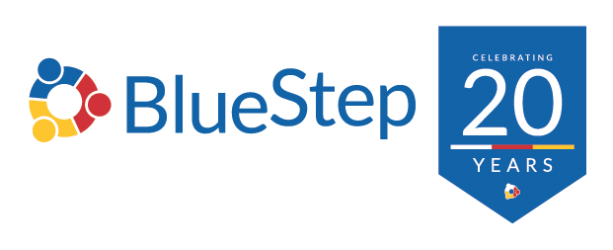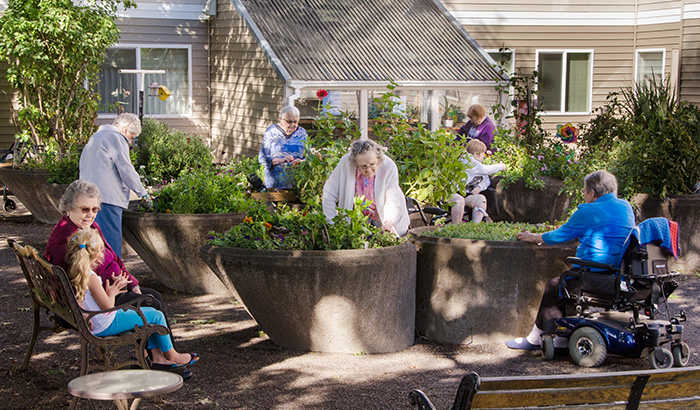In the realm of assisted living, adopting Electronic Health Records (EHR) marks a meaningful leap toward enhanced resident care and operations. EHRs are dynamic tools that actively contribute to the well-being and safety of residents. EHR notifications are at the core of this innovation — a feature that has become indispensable in modern assisted living communities.
These notifications serve as the nerve center of resident care, ensuring that critical information is conveyed promptly and accurately to the right individuals. EHR notifications are pivotal in fostering a responsive, attentive care environment. They bridge the gap between digital record-keeping and real-time, actionable healthcare insights.
In this article, we’ll delve into how these technologies enhance and reshape the assisted living landscape to be more resident-centric and efficient. EHR notifications are essential tools that empower caregivers and enhance the quality of life for residents in assisted living communities.
Understanding assisted living needs
Assisted living communities have a unique blend of hospitality and healthcare. They cater to diverse residents, each with their own needs and preferences. These facilities are designed to offer a supportive living environment where residents receive personalized care while maintaining a sense of independence.
The spectrum of services ranges from assistance with daily activities to more comprehensive medical and nursing care. This diversity in resident needs demands high coordination, precision, and personalization in care delivery. This makes the role of technology in these settings more crucial than ever.
In this context, technology emerges as a facilitator of efficient and effective resident care. It plays a pivotal role in streamlining operations, from managing resident records and medication schedules to monitoring health parameters and facilitating communication among staff, residents, and their families.
Integrating technology in assisted living is about enhancing the quality of life for residents and enabling staff to provide compassionate and competent care.
The Electronic Health Record (EHR) system is central to this technological integration. EHRs in assisted living are more than digital versions of paper charts — they are comprehensive platforms that support a wide range of functionalities tailored to the needs of assisted living communities. These systems store and organize resident health information and enable real-time monitoring.
With features like medication management, health trend analysis, and customizable care plans, EHRs are instrumental in ensuring that each resident receives care aligned with their individual health goals and preferences.
EHRs in assisted living are not standalone systems; they are often integrated with other assisted living software. Successful integration ensures that every piece of information, from dietary preferences to critical health alerts, is readily available to the care team. This integration helps with keeping resident well-being the top priority.
The role of EHR notifications in assisted living
EHR notifications, a pivotal feature within Electronic Health Records systems, serve as critical communication channels in assisted living communities. These notifications are automated alerts that inform care providers about various resident-related events, changes, or needs.
EHR notifications range from reminders for medication administration to alerts about significant changes in a resident’s health status. The importance of these notifications cannot be overstated; they are essential tools that ensure timely and appropriate responses to the evolving needs of residents, thereby enhancing the overall quality of care.
In the unique setting of assisted living, EHR notifications take on a slightly different role compared to other healthcare environments like hospitals or clinics. In acute care settings, notifications might be heavily focused on immediate medical emergencies. In assisted living, they encompass a broader spectrum.
In assisted living environments, EHR notifications include alerts for routine yet crucial tasks such as medication management, dietary needs, and regular wellness checks. These notifications are tailored to support the more personalized, long-term nature of care that is characteristic of assisted living.
These notifications mean that residents’ care is continuously monitored and adjusted as needed. This contributes to a safer, more comfortable living environment. EHR notifications ensure that critical health information is noticed and help care staff follow care plans accurately.
For staff, these alerts streamline workflows by prioritizing tasks and reducing the likelihood of human error. They allow caregivers to focus more on direct resident interaction and less on administrative tasks. This fosters a more efficient and resident-centered care environment.
In essence, EHR notifications in assisted living are not merely about conveying information; they are about enhancing the care experience for residents and empowering caregivers to provide the best possible service. They are a testament to how thoughtfully implemented technology can profoundly enrich the lives of those in assisted living communities.

Types of EHR notifications for assisted living communities
There are several different types of EHR notifications, but all of them are designed to improve the quality of care patients receive. These notifications are essential in operating assisted living communities, helping every resident receive the best possible care. Let’s delve into the most common types of EHR notifications for assisted living communities:
Medication management alerts
Medication management is one of the most critical aspects of resident care in assisted living. EHR systems provide medication management alerts to ensure residents receive the correct medication at the right time.
These alerts help providers avoid medication errors, adhere to prescribed treatment plans, and monitor potential side effects. These alerts act as a safety net to reduce or eliminate human error and assist caretakers in following medication regimens accurately and consistently.
Resident check-in alerts
Resident check-in alerts enable staff to monitor residents’ activities and overall well-being. These alerts can be set for routine check-ins, activity participation, or any significant deviation in a resident’s usual pattern.
Emergency or critical health alerts
In any healthcare setting, responding swiftly to emergencies is paramount. EHR notifications for emergency or critical health situations ensure that any sudden changes in a resident’s health are immediately communicated to the care team. These alerts facilitate a rapid response, potentially saving lives and preventing serious health complications.
Appointment and treatment reminders
Keeping track of various appointments and treatments keeps an assisted living community running smoothly. EHR notifications for appointments and treatments help streamline resident care schedules.
These reminders provide a framework for scheduling and remembering medical, therapeutic, and wellness appointments. This organization aids in efficiently managing a resident’s care plan and helps residents receive necessary treatments and interventions on time.
Regulatory compliance notifications
Compliance with health and safety standards is critical in running an assisted living community. EHR systems can provide notifications related to regulatory compliance, reminding staff of necessary assessments, documentation updates, and adherence to care protocols. These alerts help facilities maintain high standards of care and ensure compliance with all relevant regulations and guidelines.
Family communication updates
Involving family members in resident care is a crucial aspect of assisted living. EHR notifications can include updates for family members, keeping them informed about their loved one’s health status, changes in care plans, and general well-being. This fosters transparency and trust between the facility and families. It makes family members part of the care team and decision-making process.
Integrating EHR software with assisted living software
Combining EHR notifications with assisted living software represents a synergy that is transforming the landscape of resident care. This fusion creates a cohesive, efficient, and responsive care environment. By integrating EHR notifications into the broader framework of assisted living software, facilities can build a seamless flow of information.
This integration allows for a more holistic view of each resident’s care journey. When combined with assisted living software, EHR notifications provide a comprehensive platform where all aspects of a resident’s health, activities, and preferences are interconnected.
For staff, this means less time spent navigating between systems and more time available for direct resident care. It offers residents a more personalized and attentive care experience where their needs are anticipated. Ultimately, this integration is about creating a harmonious environment where technology enriches the lives of those in assisted living communities.

Best practices for implementing EHR notifications in assisted living
Implementing EHR notifications in assisted living communities requires a thoughtful approach. The ultimate goal is to align the technology seamlessly with the facility’s unique needs, thus enhancing the quality of provided care.
First and foremost, it’s crucial to tailor these notifications to the specific requirements of each facility. This customization ensures that alerts are relevant and actionable and contribute to the efficiency of care delivery rather than creating unnecessary noise.
Equally important is training staff on the effective use of EHR notifications. Staff should be well-versed in interpreting these alerts and understanding the appropriate actions to take. This training maximizes the benefits of the EHR system.
Lastly, facilities must ensure their EHR systems adhere to all regulatory standards to protect resident information while delivering critical care insights. This balance of technology, training, and compliance is key to successfully implementing EHR notifications in assisted living communities.
Improve your facility with BlueStep Systems.
EHR notifications play a vital role in enhancing the quality of care and operational efficiency. For over 20 years, BlueStep has been committed to empowering assisted living communities through technology; today, our commitment is as strong as ever. We invite you to explore our range of assisted living software and EHR solutions, designed with the needs of both caregivers and residents in mind.
Contact BlueStep Systems, and together, let’s redefine the future of assisted living care.


